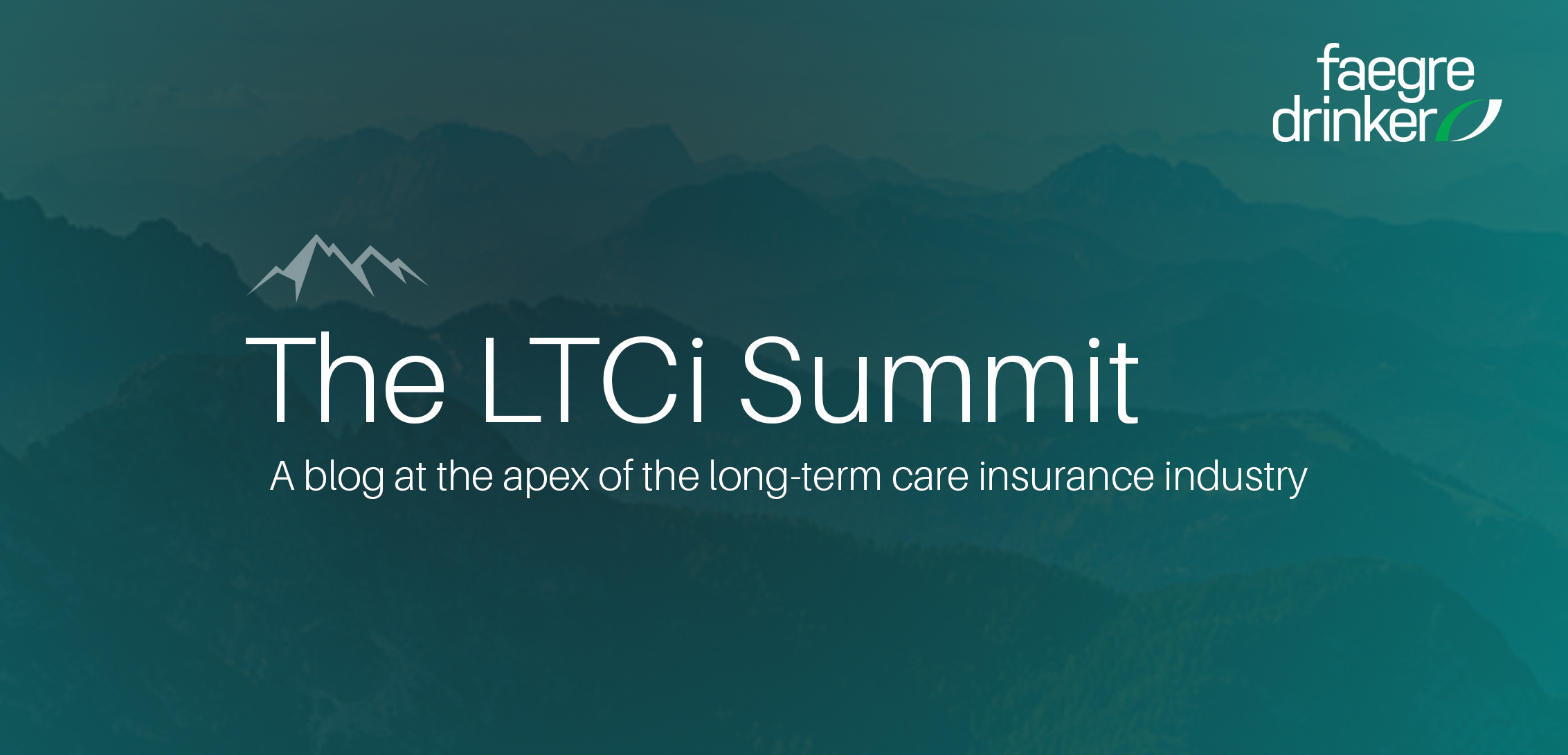Over the past few years, insurers, consumers and regulators have asked the question: who, and how, will consumers receive and pay for long-term care? The older, retired population will soon substantially outnumber the working population and the number of private insurers providing long-term care continues to dwindle. A report from the American Council of Life Insurers projects 70% of Americans turning age 65 or older will require long-term care. By 2060, the number of Americans turning age 65 or older will double and those turning age 85 or older will triple. As the population continues to age, the average cost of care continues to rise. Thus, the government faces a looming risk of unbearable expenses as more individuals rely on Medicaid for elder care. In light of this statistical reality, governments, insurers and long-term care (LTC) providers are trying to find cost-efficient ways to offer long-term care to consumers in need and, in turn, increase access to care.
To help control these costs and improve access to care, LTC providers and insurers are taking steps to adopt a risk mitigation approach. This approach leans on policyholders to take a more active role in minimizing their need for care. LTC insurers, for instance, are exploring health and wellness programs to encourage healthy behaviors in an effort to reduce the demand for long-term care services and support. In addition, LTC insurers have an opportunity to develop “insurtech” products that can facilitate these supplemental programs and services. For instance, “wearables” or smart devices have gained traction in the life insurance industry as a digital means to assess risk.
With more comprehensive data, life insurers can cut costs, offer premium discounts, and improve access to care. LTC insurers have already used insurtech to improve claims invoicing processes, and so using insurtech to facilitate patient wellness would be another positive step in controlling long-term care needs. LTC providers have a role to play, too. For instance, LTC providers can take advantage of technological advancements in telehealth. Telehealth allows for digital consultations and quicker access to care, which in turn facilitates more communication and engagement with consumers. In these ways, LTC insurers and providers are changing the paradigm from treatment-based care to preventative-based care.
While the dynamic of rising elder care costs combined with increasing ratios of older/retired individuals to working individuals is occurring in the U.S., it is not solely a U.S. issue. Most of the developed world faces some element of this fiscal and social predicament and societies around the world are trying to create ways to more efficiently deliver long-term care. Policy makers in the Organisation for Economic Co-operation and Development (OECD) countries, for instance, have encouraged home care over institutional care, adjusted and improved financial incentives for LTC providers, and discussed implementing technology to improve productivity providing care.1 Implementing new technology, as discussed above, is still in its infancy stages today, and OECD countries still have room for growth to adopt telemedicine services.2
Research organizations are hoping to play a role in addressing the long-term care issue. As a result of the acute need to address this fiscal and social predicament, OECD, which has as members a group of leading international countries, has released several reports over the past decade on how to address providing care for the aging population. More recently, the OECD has begun the process of gathering information to better understand the role of preventative care and technology in the long-term care industry. The goal of the survey is to share information to OECD countries that might identify potential solutions, lead to better practices and encourage productive policy-making. This research is in its beginning stages and not all LTC insurers have adopted this approach, but it will likely be necessary in order to assess and provide care for the aging population.
Although the answer to the question of who, and how, consumers will receive and pay for long-term care remains unclear, what is clear is that policymakers, LTC insurers, and LTC providers alike are aware of the challenges associated with the ever-escalating need for long-term care and will need to adapt to how they provide care in order to provide the best care.
1 Francesca Colombo, Ana Llena-Nozal, Jérôme Mercier, Frits Tjadens, OECD, Help Wanted? Providing and Paying for Long-Term Care (2011); Ilaria Mosca, Philip J. van der Wees, Esther S. Mot, Joost J.G. Wammes, Patrick P.T. Jeurissen, Sustainability of Long-term Care: Puzzling Tasks Ahead for Policy-Makers, 6 Int. J. Health Pol’y Mgmt. 195 (2017); Long-term Care and Health Care Insurance in OECD and Other Countries, OECD (2020).
2 Tiago Cravo Oliveira Hashiguchi, OECD, Bringing Health Care to the Patient: An Overview of the Use of Telemedicine in OECD Countries (2020).
The material contained in this communication is informational, general in nature and does not constitute legal advice. The material contained in this communication should not be relied upon or used without consulting a lawyer to consider your specific circumstances. This communication was published on the date specified and may not include any changes in the topics, laws, rules or regulations covered. Receipt of this communication does not establish an attorney-client relationship. In some jurisdictions, this communication may be considered attorney advertising.


